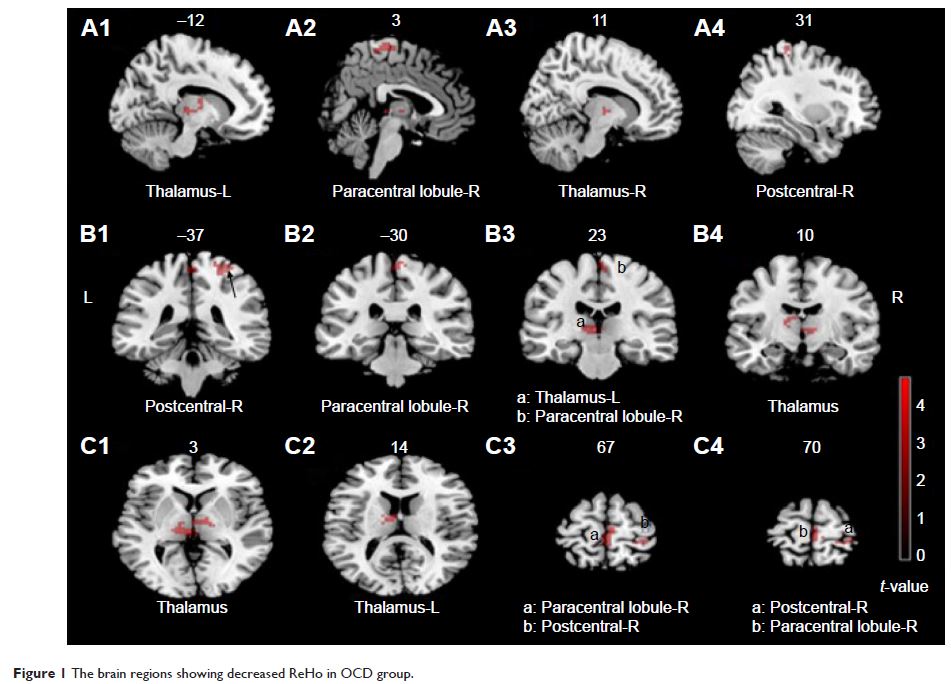9 9 6 5 3
论文已发表
注册即可获取德孚的最新动态
IF 收录期刊
- 3.3 Breast Cancer (Dove Med Press)
- 3.4 Clin Epidemiol
- 2.5 Cancer Manag Res
- 2.9 Infect Drug Resist
- 3.5 Clin Interv Aging
- 4.7 Drug Des Dev Ther
- 2.7 Int J Chronic Obstr
- 6.6 Int J Nanomed
- 2.5 Int J Women's Health
- 2.5 Neuropsych Dis Treat
- 2.7 OncoTargets Ther
- 2.0 Patient Prefer Adher
- 2.3 Ther Clin Risk Manag
- 2.5 J Pain Res
- 2.8 Diabet Metab Synd Ob
- 2.8 Psychol Res Behav Ma
- 3.0 Nat Sci Sleep
- 1.8 Pharmgenomics Pers Med
- 2.7 Risk Manag Healthc Policy
- 4.2 J Inflamm Res
- 2.1 Int J Gen Med
- 4.2 J Hepatocell Carcinoma
- 3.7 J Asthma Allergy
- 1.9 Clin Cosmet Investig Dermatol
- 2.7 J Multidiscip Healthc

首次发作的强迫性精神障碍患者的异常的休息状态大脑活动
Authors Niu Q, Yang L, Song X, Chu C, Liu H, Zhang L, Li Y, Zhang X, Cheng J, Li Y
Received 18 July 2016
Accepted for publication 11 October 2016
Published 16 February 2017 Volume 2017:13 Pages 507—513
DOI https://doi.org/10.2147/NDT.S117510
Checked for plagiarism Yes
Review by Single-blind
Peer reviewers approved by Prof. Dr. Roumen Kirov
Peer reviewer comments 3
Editor who approved publication: Professor Wai Kwong Tang
Objective: This paper attempts to explore the brain activity of patients with
obsessive-compulsive disorder (OCD) and its correlation with the disease at
resting duration in patients with first-episode OCD, providing a forceful
imaging basis for clinic diagnosis and pathogenesis of OCD.
Methods: Twenty-six patients with first-episode OCD and 25
healthy controls (HC group; matched for age, sex, and education level)
underwent functional magnetic resonance imaging (fMRI) scanning at resting
state. Statistical parametric mapping 8, data processing assistant for
resting-state fMRI analysis toolkit, and resting state fMRI data analysis
toolkit packages were used to process the fMRI data on Matlab 2012a platform,
and the difference of regional homogeneity (ReHo) values between the OCD group
and HC group was detected with independent two-sample t -test. With age as
a concomitant variable, the Pearson correlation analysis was adopted to study
the correlation between the disease duration and ReHo value of whole brain.
Results: Compared with HC group, the ReHo values in OCD group
were decreased in brain regions, including left thalamus, right thalamus, right
paracentral lobule, right postcentral gyrus, and the ReHo value was increased
in the left angular gyrus region. There was a negative correlation between
disease duration and ReHo value in the bilateral orbitofrontal cortex (OFC).
Conclusion: OCD is a multifactorial disease generally caused by
abnormal activities of many brain regions at resting state. Worse brain activity
of the OFC is related to the OCD duration, which provides a new insight to the
pathogenesis of OCD.
Keywords: OCD, resting state, functional MRI,
regional homogeneity
